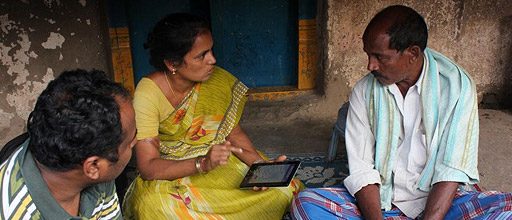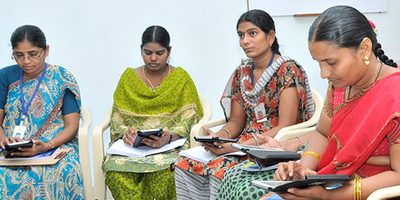
George Institute for Global Health recommends task-sharing for effective cardiovascular disease management
Models of care that empower the non-physician health care workers to work alongside physicians and support them to diagnose and manage high-risk individuals appears to have considerable potential to deal with the growing burden of cardiovascular diseases (CVD) in resource poor settings, reveal a series of studies done at The George Institute for Global Health.
In India, high levels of CVD risk factors have been documented in various rural populations, which currently constitute 70% of the total population, with CVD being the leading cause of adult death in many such communities. Based on these results of the Rural Andhra Pradesh Cardiovascular Prevention Study (RAPCAPS), the George Institute for Global Health launched a project called SMARTHealth. The project will explore the use of technology along with a proper mechanism of task sharing between the physicians and the non-physician health force that can provide the way forward for managing CVDs.
This Doctor’s day, the George Institute for Global Health has given the call for a new relationship between the physician and the non-physician work force.
“We need to innovate models of care that train and empower Non-Physician Health Workers (NPHW) to diagnose and treat high-risk individuals with cardiovascular disease’’, says Dr D Praveen, Senior Research Fellow, The George Institute for Global Health India.
The initial evaluation of the SMARTHealth platform is now complete. The project which initially is based on CVDs would explore the mechanism of task sharing and would be in the form of an intervention research that would explore how technology can empower the non-physician health workers to carry out screening and co-ordinate with physicians for better management of the important causes of death and disability. This study modified and developed a more robust algorithm based on a mobile platform, building on the lessons learned in the RAPCAPS project. The initial evaluation in a primary health care setting demonstrated high acceptability among the ASHAs and primary care physicians.
Earlier in RAPCAPS, the results of the cluster–randomised control trial done in 44 villages located in the Godavari districts of Andhra Pradesh, India, also showed how task sharing can lead to effective CVD management. In that study, villages were randomised to receive the intervention package which involved the use of a simple algorithm designed to increase the identification and treatment of individuals at high-risk of CVD and to be used by NPHWs. High-risk individuals were referred to physicians for initiation of treatment and NPHWs provided follow up care. The primary outcome was the proportion of high-risk individuals identified.
“The health workforce shortage in rural regions can be tackled by launching a CVD prevention strategy that could be delivered by non-physician healthcare workers (NPHWs)," says Dr Rohina Joshi, senior research fellow at The George Institute for Global Health Australia and the University of Sydney.
Outcomes were assessed between 12 and 24 months amongst 1135 high-risk individuals. The clinical algorithm increased the proportion of high-risk individuals identified (63.3% versus 51.4%, p=0.028). By following the algorithm, NPHWs were able to make clinical care recommendations identical to those of physicians in 87% of cases studied.
Rural Andhra Pradesh has a large disease burden attributable to CVD with significant under-utilisation of evidence based low-cost preventive medications. Primary care physicians are first point of contact and the main providers of healthcare for individuals with CVDs.
In low and middle income countries too few doctors exist and physician workforce disparities for rural and remote regions are very substantial. "In India, the number of physicians per 1000 population is just 0.6 and therefore different models of care are imperative,’’ added Dr Joshi.





